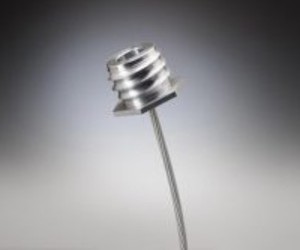 Bergen’s wire-rope wisdom: Bending hazards unraveled for strength and safety
Bergen’s wire-rope wisdom: Bending hazards unraveled for strength and safety
February 14, 2024 REDWIRE is news you can use from leading suppliers. Powered by FRASERS.
Posted by Bergen Cable Technology, Inc
Mfr Mechanical Cable, Cable Assemblies & Push-Pull Controls. Original Mfr Of Safety Cable, A Patented Fastener Reten... Read more
Subscribe
Free REDWIRE e-newsletter

Bending wire rope can result in fatigue.
Bergen Cable supplies a wide range of industrial cable products, but its customers also rely on the company’s selection of wire rope. And in addition to offering all these solutions, the Bergen team serves as a crew of experts who advise businesses on how to get the most out of them.
Customers turn to the Bergen website for a plethora of resources about using cable and wire rope properly – including a helpful guide to the risks of bending wire rope.
Fatigue and strength loss
Wire rope is often subject to bending around drums or sheaves, according to the Bergen online guide, and its usefulness might depend on the drum and sheave locations. Wire rope should always be lubricated properly to make it effective around these areas because wires and strands slide on each other during bending.
The inability of wires and strands to adjust to altered positions can lead to reduced rope strength when wire rope is bent. Strength often decreases to a significant degree when the sheave diameter gets smaller compared to rope diameter, and the strength loss from bending over sheaves is typically about four per cent. Repeated flexing of wires develops bending loads that set up points of stress concentration, even when within the wire’s elastic limit.
Fatigue is another common result of bending wire rope, and it appears in the form of small cracks in wires at over-stressed foci. These cracks propagate under repeated stress cycles until the last sound metal cannot handle the bending load, according to Bergen, and this leads to broken wires that exhibit no sign of cross-section contraction.
Figuring out the smallest size of sheave or drum that enables the most effective wire-rope performance is impossible, since various factors affect the lifespan of this solution. With slow speeds and light loads, smaller sheaves and drums can be employed without leading to premature fatigue, while reverse bends (bending wire rope in one direction and then bending it in the opposite direction) may result in high, premature fatigue. If the application requires reverse bends, larger sheaves will be necessary.
For more information, contact Bergen.
Share
Posted by Bergen Cable Technology, Inc
Mfr Mechanical Cable, Cable Assemblies & Push-Pull Controls. Original Mfr Of Safety Cable, A Patented Fastener Reten... Read more
